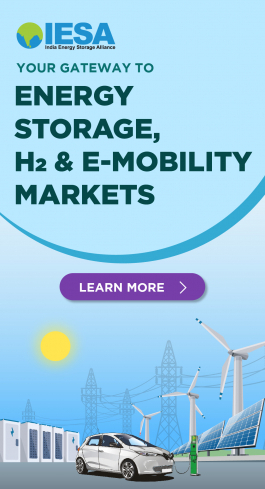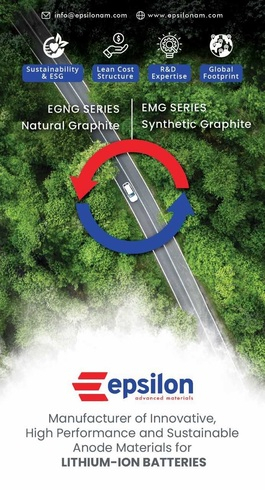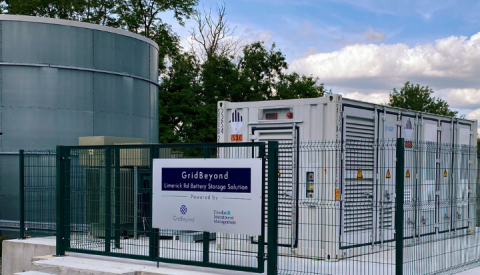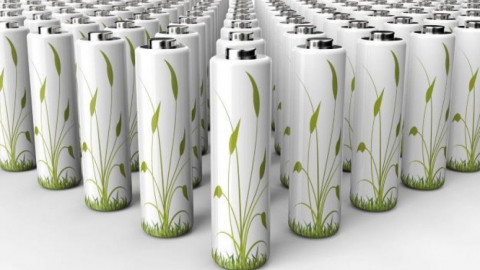Highlights of IESA webinar on COVID impact on electricity utilities
On April 2, 2020, India Energy Storage Alliance (IESA) held an open webinar on 'The Role and Readiness of Electricity Utilities during COVID-19 Effect'. Over 300 participants registered for the webinar to hear experts discuss the COVID-19 crisis, Indian utilities' readiness and the way forward.
Following are key highlights of the Speakers' talk:
• There has been a reduction of 24 percent in peak demand in Delhi as of
late March.
• Lower demand and input energy have resulted in record coal stock at stations and very competitive prices on PX. However, it has offered an opportunity to optimize PPC and pass on benefits to the consumers.
• On consumer-side, Utilities had taken measures to honor social distancing and issued provisional bills which could be paid online, but DISCOMs and other players in the supply chain have been impacted due to cashflow crunch. Reductions in billing and collections is observed, with C&I consumers being the hardest hit. They have requested moratorium on bill payments.
• Present crisis is an opportunity to transform to 'Digital Utility'. Concept of digital utility will gain currency among stakeholders post lockdown period.
• Positive fallout in Delhi has been improved air quality primarily because of negligible transportation and halt in construction activities. This makes an even stronger case for the need to push towards e-mobility and sustainable construction practices in the future. An opportunity for policymakers to assess how can EVs be rolled out at a faster pace.
• Support from State and Central government such as granting power and including RE sector 'essential services' status, ensured smooth operations. Special passes issued by Delhi State government allowed staff to commute.
• Consumer connect has grown. Power providers are looking at multiple e-channels for servicing consumers. DISCOMs and consumers both are getting a chance to change the way they're interacting with one another.
BB Mehta – Chief Engineer, SLDC, Gujarat Energy Transmission Corporation Limited (GETCO)
• Readiness to deal with load variations and issues like high voltages, under loading and variability of RE sources.
• 16,000 MW in Gujarat has touched bottom 6,000 MW due to drop in demand.
• High time for balancing and storage technology a must to mitigate any such fluctuation.
• Policymakers need to plan balancing and storage solutions immediately after lockdown ends.
• Post lockdown there has been a drop in demand and cashflow has been disrupted, 24x7 monitoring, utilities are constantly in touch with DISCOMs and sub SLDCs, real time updates on generation and availability maintained.
Jitendra Nalwaya, Vice President, BSES Yamuna Power
• Action taken so far includes deploying minimum workforce on field. Working with 33 percent of the total workforce now. Workplace protection protocols and social distancing enforced for lineman other staff on field. Active sanitization of office, setting up back-up offices where employees can work while other areas gets sanitized, setting up nodal offices for each of the 14 divisions for operations, material planning and feedback.
• Feeders serving essential services like hospitals are being monitored closely.
• Central Control Room set up to guide employees on deployments (24x7 with medical officers and QRTs to take care of contingency).
• Taking digital engagements deeper. Helplines, complaints and bills handled online; minimized to avoid contact.
• Enough manpower available 24x7 and staggered deployment to minimize risk.
• Active power procurement management; close watch on power availability/surplus situation.
• Power scheduling and forecasting has been impacted. In March 2019, the power demand on BYPL was 878 MW load, this year it came down to 525 MW. Low load causing high voltage issue impacting and system reliability.
• Things to improve in next week or so, as summer sets in and demand will peak again.
Dr. Rahul Walawalkar – President, IESA
• Due to COVID-19 and resultant lockdown, India's peak load has dropped. we're noticing significant drop in national level load profiles seen across all the regions.
• All India reduction by 25 percent, already coal-plants running at low load factors and particularly with increasing RE in the mix it's further running on low load
• Good news is POSOCO, State, and other regulatory load dispatch centers are managing load well.
• Concerns have been raised whether India will reach 400GW load by 2030.
• GoI initiatives in so far have helped Utilities prepare better for lockdown. MoP, MNRE have taken initiatives along with State regulators to ensure lower demand doesn't impact long-term business operations
• Government looking at stimulus plan and incentives, so once we resume activities we can start increasing industrial and manufacturing activities
in the next 3-4 months.
• Utilities and grid operators need to keep long-term growth projections in mind and device solutions.
• The importance of storage has again come into the forefront for managing grid security in such conditions.
• To cater to the ingress of renewables and low load demand many conventional plants have been ramped down, this has resulted in multiple switching of loads and ramping which can be managed well with storage.
















